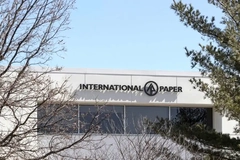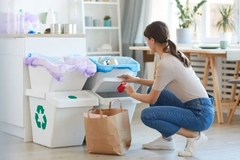Bakery packaging and the food waste crisis: Fighting spoilage and plastic waste

19 Apr 2023 --- Bakery packaging is a segment focussed on balancing food shelf life with material reduction. Products that struggle to stay fresh, such as bread, require packaging technologies and materials that can extend their lifespan to avoid food waste.
The problem of decreasing packaging without increasing food waste is one of the most common within the F&B packaging industry, particularly as spoiled food is one the leading contributors to GHG emissions globally.
According to WRAP, an estimated 44% of all bread is thrown away because consumers do not consume it before it goes stale. This equates to 24 million slices of bread every day.
We speak to experts at Sealpac and Coveris about the latest trends in the segment and how they are tackling waste on different levels of the supply chain.
Marcel Veenstra, marketing and communications manager at Sealpac, emphasizes that modified atmosphere technology (MAP) is central to helping packagers keep bakery products on shelves and out of landfills.
“Manufacturers in bakery are strongly looking for shelf life extension by applying MAP, for example, in the growing segment of bake-off products. By exchanging the normal air inside the package with a suitable gas mixture, shelf lives of at least 30 days can be achieved. In the case of gluten-free bakery products, another booming segment, MAP prevents these products from drying out,” he explains.
 “Less packaging” is the fastest-growing environmental claim for bakery packaging, according to Innova Market Insights.Plastic reduction and paper
“Less packaging” is the fastest-growing environmental claim for bakery packaging, according to Innova Market Insights.Plastic reduction and paper
According to Innova Market Insights, bakery NPD witnessed an annual average growth rate of 4% between 2018-2022, in which time “less packaging” was the fastest-growing environmental claim.
Two out of three bakery packaging materials during the same period were marked as plastics (unspecified). Veenstra says that the claim for reduced packaging may be driven by global consumer sentiments against plastics, which have helped create legal reforms such as the EU Single Use Plastic Ban and UK Single Use Plastic Tax.
Eric Valette, innovation BU flexibles director at Coveris, says that global sustainability focus "has redirected the packaging development from user-friendly features (like easy opening and reclosed functionality) to a sustainability-focus. At Coveris we believe the first stage of this evolution was the conversion to mono materials packaging.”
“We expect more innovations in flexible packaging materials as new products emerge on bakery shelves, including healthy and natural snacks. We see a growing trend among consumers to look for products that are better for their health and the planet, which aligns with Coveris’ No Waste vision for packaging innovation,” continues Valette.
Veenstra also says that anti-plastic sentiment has driven packaging development around bakery.
“Triggered by legislation, there is a strong push to use less plastic at retail, but the focus seems to be more on other food segments, for example, meat, poultry, seafood, ready meals and snacks – not so much on bakery – probably because the current flexible packaging of bakery products is already at a minimal level.”  Coveris highlights the importance of monomaterial designs in improving environmental sustainability for the bakery sector.
Coveris highlights the importance of monomaterial designs in improving environmental sustainability for the bakery sector.
“In the case of retail products, there will be changes made in the packaging. For example, we expect an increased use of paper-based packaging. Legislators can also assist in rewarding food manufacturers and retailers that launch initiatives resulting in less food waste, or punish the ones that don’t,” continues Veenstra.
Rapid Air Forming
Sealpac’s thermoformers are designed to help brands reduce content. The company’s Rapid Air Forming System is an example of emerging technology that can be modified for different types of packaging materials to reduce their environmental footprint.
“This system achieves an improved forming consistency, particularly in the corners of the pack, without requiring an additional stamp mechanism. As a result, up to 10% thinner films can be used,” says Veenstra.
“Furthermore, we cooperate with material suppliers to create more sustainable solutions, for example, by working with mono films that improve recyclability, as well as with biodegradable or recycled materials.”
In general, Sealpac assists producers in creating packaging with minimum plastic content, he explains.
“Even though most bake-off products are already packaged in relatively thin, flexible film, we still try to reduce the thickness of the film by offering the Rapid Air Forming System on our thermoformers.”
 Sealpac’s Rapid Air Forming System helps companies cut down on plastic use.Portioned and reclosable packaging
Sealpac’s Rapid Air Forming System helps companies cut down on plastic use.Portioned and reclosable packaging
Another trend used for reducing bakery food waste is portion packaging, which can assist individual households in keeping products from spoiling.
“We supply various features to create innovative portion-packs, both on our traysealers and thermoformers. Specifically for retail packs, we provide several solutions that allow our customers to switch from plastic packaging to paper-based packaging. We also offer our EasyLid system for reclosable packaging,” says Veenstra.
“This system allows for sealing and lidding in one single step, simply using the top film and a special EasyLid tray. As such, the common snap-on lid can be eliminated.”
The food waste compromise
Last year, Innova Market Insights listed “Food Waste Fighters” as a top trend, noting that over half (37%) of global consumers “agree” or “strongly agree” (25%) that the protective function of product packaging has become more important due to the COVID-19 pandemic.
A resurgence of plastic use during the pandemic brought up the continuing problem of how to balance and compromise food waste with packaging materials, particularly those made of fossil fuels.
“One has to look at the total footprint, including the product itself. In the case of fresh food, it may well be that the product makes up 90% of the footprint and the packaging 10%,” says Veenstra.
“For some products, it is possible to do without packaging, but for most food items, this is not an option. One has to look at the total footprint, including the product itself. In case of fresh food, it may well be that the product makes up 90% of the footprint and the packaging 10%. In that case, protecting the product with some amount of plastic is still the better option.”
“In other words: as little plastic as possible, as much as necessary,” he concludes.
By Louis Gore-Langton











